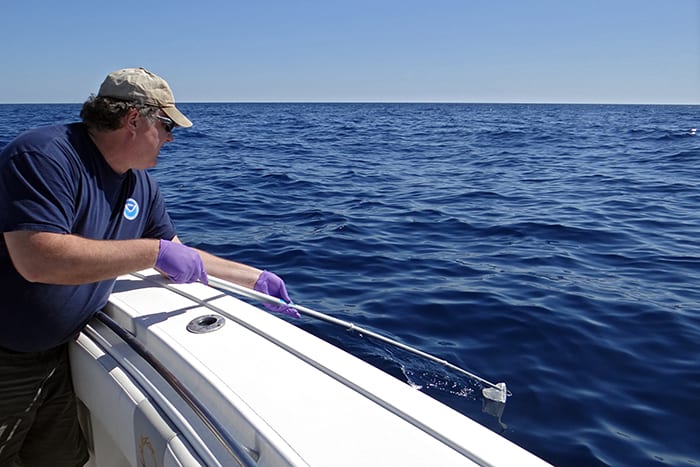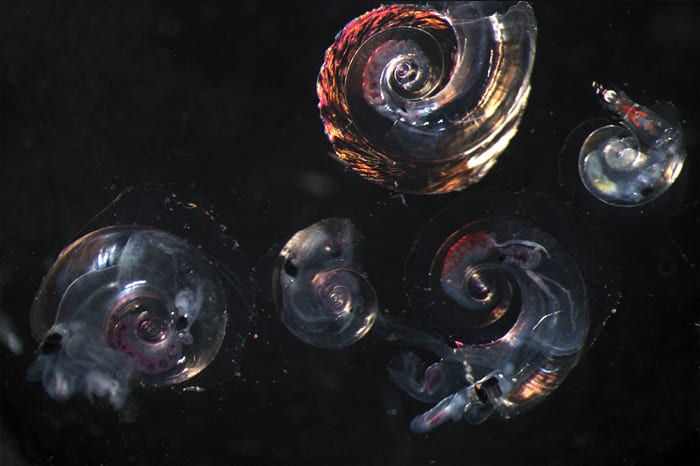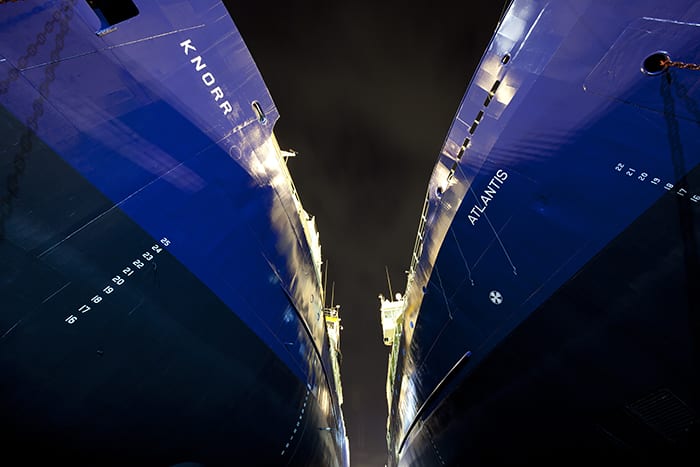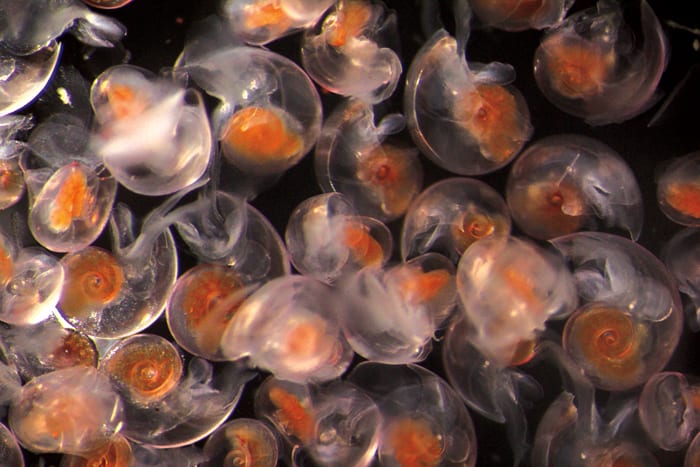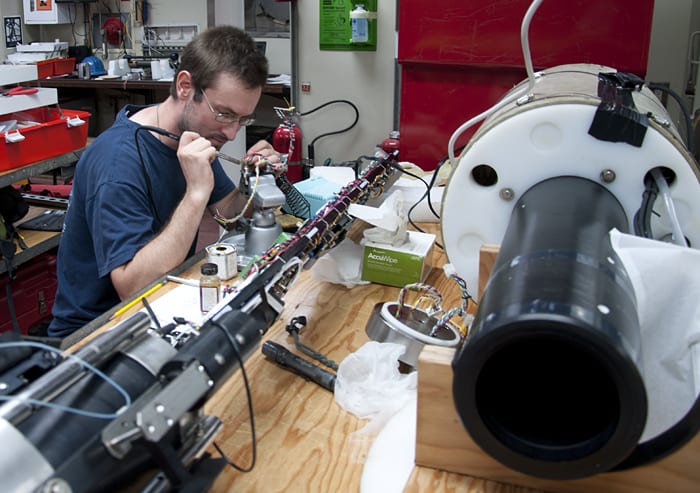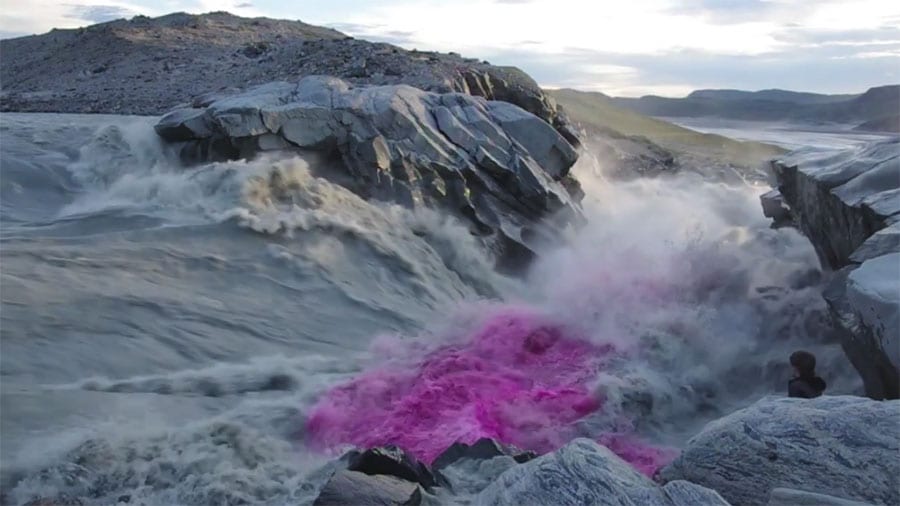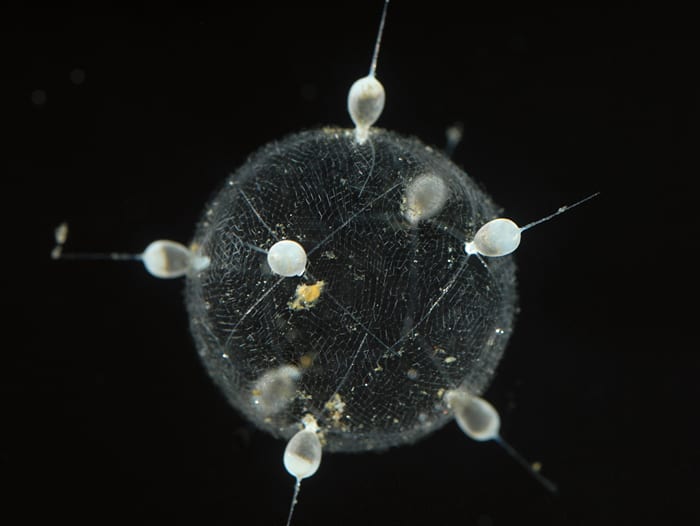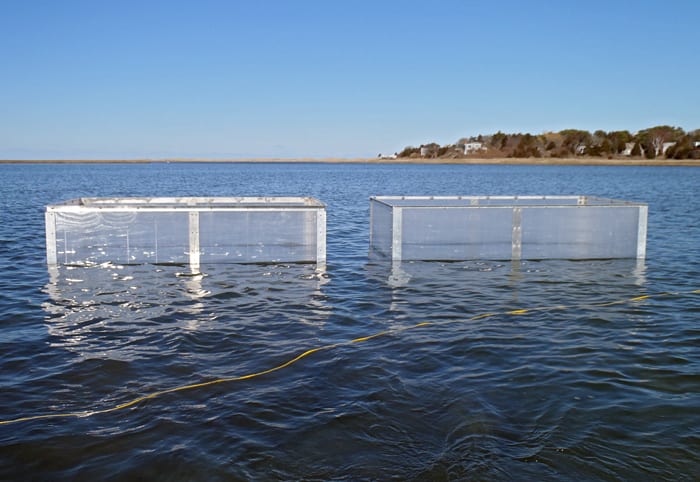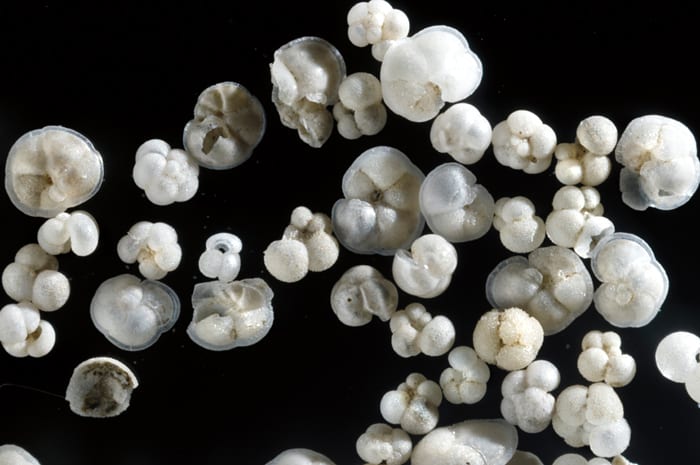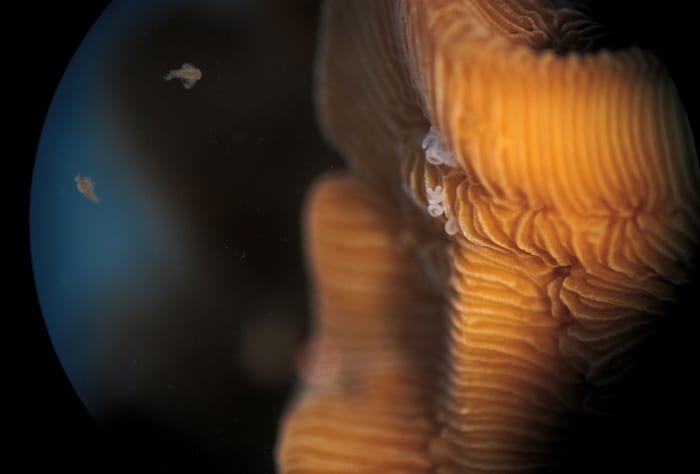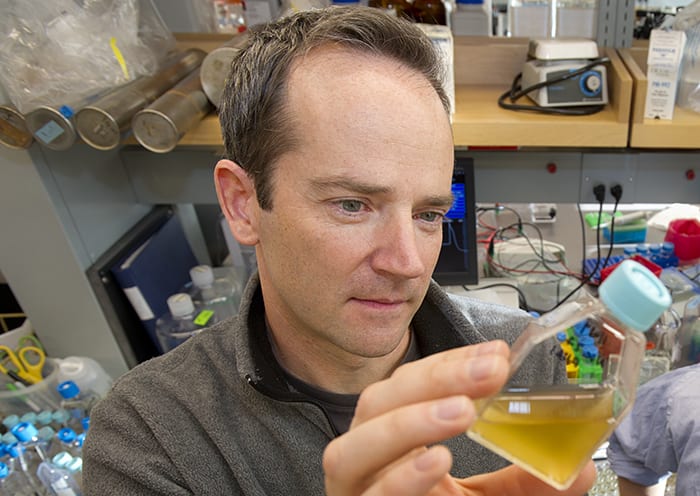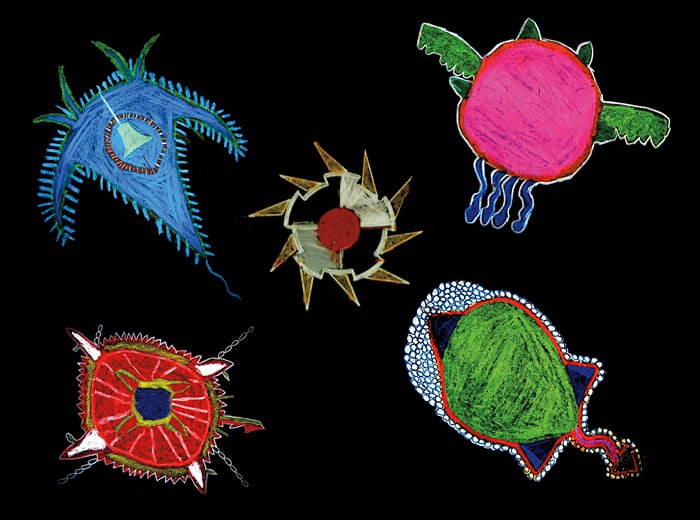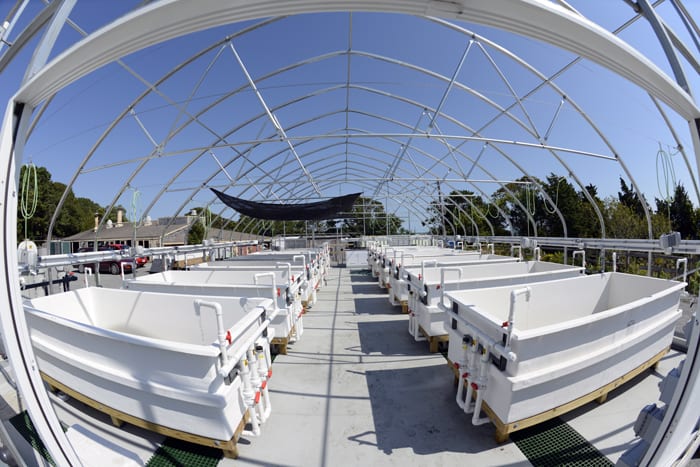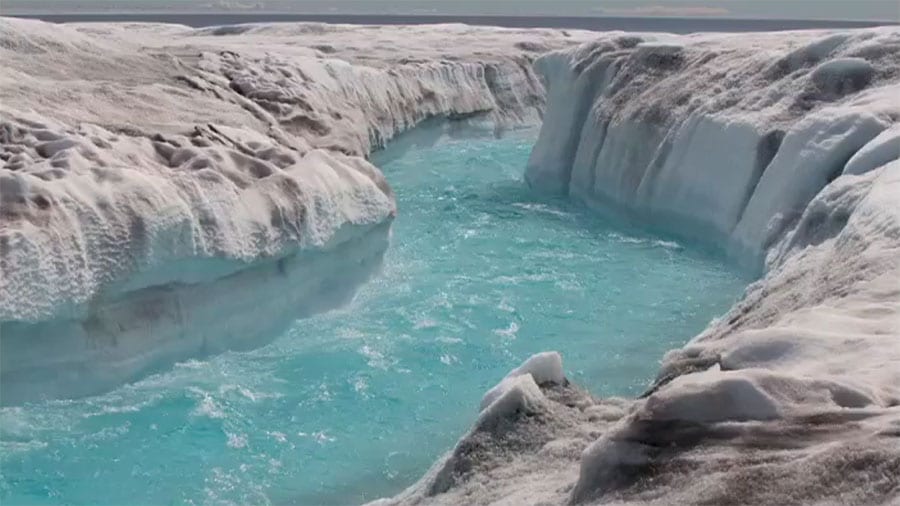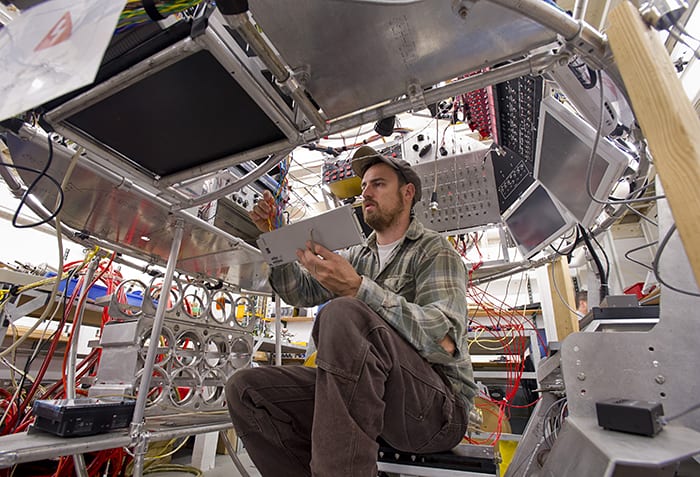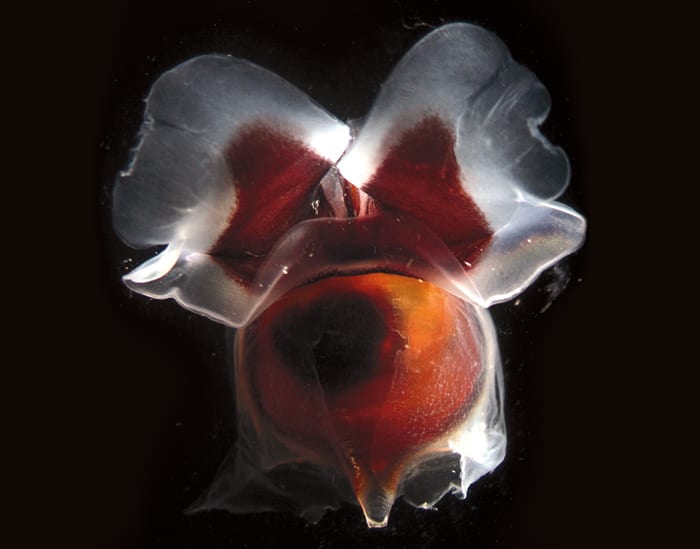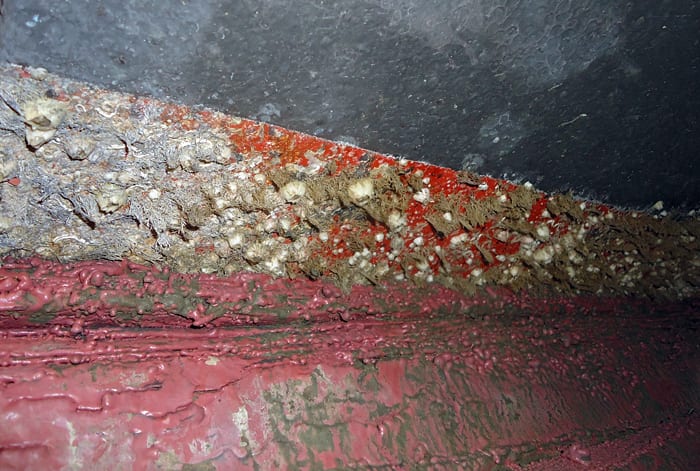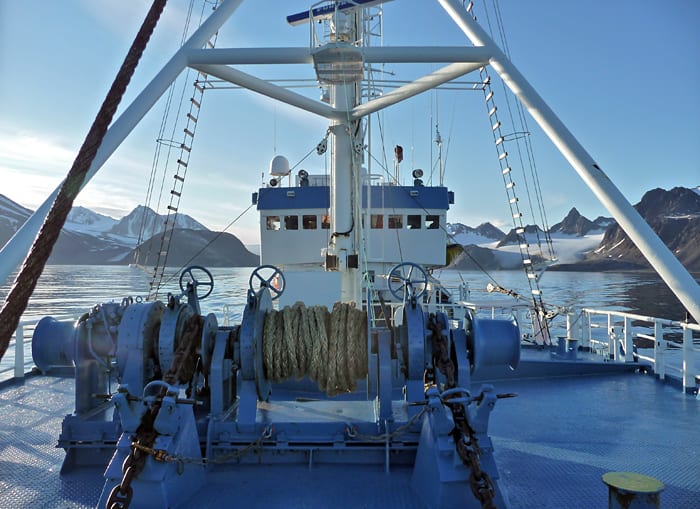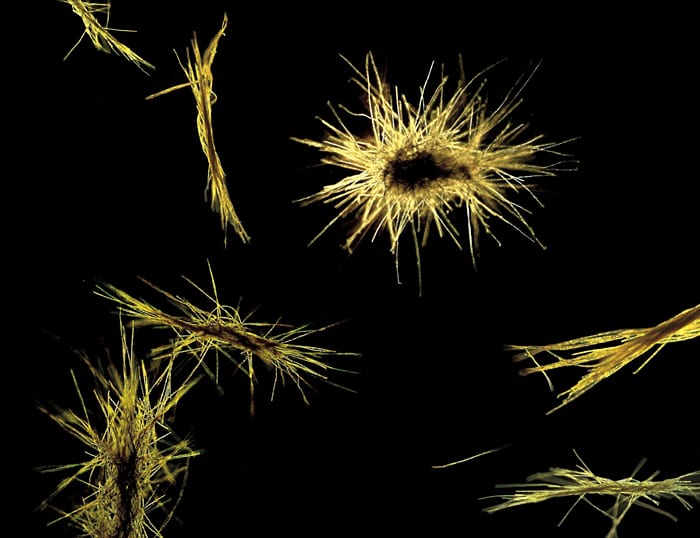Multimedia
Taking a Dip
In October 2012, WHOI research specialist Bob Nelson used a piece of super-clean Teflon netting to sample a sheen of oil on the surface of the Gulf of Mexico. The…
Read MoreReef Indicator
The blackbacked butterflyfish (Chaetodon melannotus) often feeds on soft corals. During a trip to the Farasan Banks in the Saudi Arabian waters of the Red Sea in 2009, WHOI biologist…
Read MoreSharp-eyed Snails
Planktonic snails called atlantid heteropods live in the open ocean far from the surface, the sea floor, and the shore. Their transparent shells reveal red V-shaped ovaries in one animal…
Read MoreReady for 2013
R/V Atlantis chief engineer Chris Morgan captured this rare shot of WHOI’s two large oceanographic research vessels freshly painted and ready to leave drydock at the end of 2012. Both…
Read MoreTiny Pteropods
WHOI scientist Gareth Lawson recently led a research cruise in the Pacific to study sea butterflies, swimming snails whose scientific name, pteropod, means ‘wing foot’. This species, Limacina inflata, has…
Read MoreAcidification on the Horizon
WHOI cientists Scott Doney, Anne Cohen, and Sarah Cooley (left to right) participated in a panel discussion about ocean acidification in Redfield Auditorium in August 2012. Ocean acidification is a…
Read MoreMr. Fix-it
When an o-ring failed during a research cruise on R/V Knorr in October, WHOI engineer Ken Decoteau found himself assembling a new wiring harness to keep the data flowing. The instrument…
Read MoreFollowing the Ice 2012
In 2012, researchers camped at Greenland’s Leverett Glacier to study melting—and witnessed one of the most intense melt seasons ever recorded.
Read MoreCrystalline Colony
A tiny planetoid adrift in an endless, dark ocean universe, this colonial protist was found off the Philippines, where biologist Larry Madin led a research trip to find deep-living organisms…
Read MoreQuick Turnaround
After some careful handling on increasingly lively seas, the autonomous underwater vehicle Sentry is lowered back into its cradle on R/V Melville off the coast of Chile in the Spring…
Read MoreHappy Boxing Day
This past winter WHOI Senior Research Technician Dave Kulis installed these Lexan boxes in Nauset Marsh on Cape Cod to test an experimental method to reduce the severity of harmful…
Read MoreMerry Christmas
On Christmas Day in Antarctica in 2010, these scientists found themselves hard at work rather than by a cozy hearth. They did, however, have a white Christmas—even though it was…
Read MoreFascinating Foraminifera
Seafloor sediments contain millions of tiny shells of foraminifera—single-celled ocean organisms that lived, died, and sank to the ocean bottom over the ages. The fossil shells (seen here through a…
Read MoreCoral Castle
Seen through a microscope, this corrugated coral seems like a battlemented castle defending itself against tiny missiles. In fact, the coral will catch and eat any of the little arrowhead-shaped…
Read MoreBacterial Behavior
Microbial ecologist Tracy Mincer assesses a culture of bacteria in his lab at WHOI. Mincer studies the chemical compounds marine microbes produce to communicate with each other, defend themselves, and…
Read MoreFanciful Phytoplankton
In 2006, WHOI biologist Sonya Dyhrman and research associate Sheean Haley created “Artistic Oceanographer,” a program to engage fifth-grade students in ocean sciences through art. After learning about phytoplankton and…
Read MoreOcean in a Tank
Over the summer, construction crews on WHOI’s Quissett campus finished a flow-through seawater mesocosm, which allows scientists to conduct controlled experiments under realistic light and weather conditions. Filtered water from Martha’s Vineyard Sound passes…
Read MoreThe Changing Face of Greenland
Interview with WHOI glaciologist Sarah Das.
Read MoreStalwart Survivor
The golf-ball-size slate pencil urchin, Eucidaris tribuloides, belongs to the only group of sea urchins known to have survived the Permian-Triassic extinction that occurred about 252 million years ago. Only…
Read MoreInside Alvin
In late October, WHOI engineer and Alvin pilot Sean Kelley prepared wiring that will eventually be moved inside the submersible’s personnel sphere. His work was in advance of a full…
Read MoreBrown Butterfly
The half-inch-long Cavolinia uncinata swims by flapping two wing-like extensions that give the group of planktonic snails formally known as pteropods its unofficial name of “sea butterflies”. Scientists on a…
Read MoreSailors’ Bane
Barnacles and other organisms cling to the hull of R/V Knorr. Such “biofouling” greatly increases frictional drag on ships, costing ship owners millions of dollars a year in added fuel…
Read MoreA First Time for Everything
The R/V Lance is an old sealing vessel that was converted by the Norwegian Polar Institute to support oceanographic research. Its design requires moorings to be deployed off the ship’s…
Read MorePrickly Plankton
Species of the single-celled phytoplankton Trichodesmium form colonies with distinctive shapes. Individual colonies, shown here, are visible to the naked eye. Where currents and winds gather many colonies together, aggregations…
Read More
